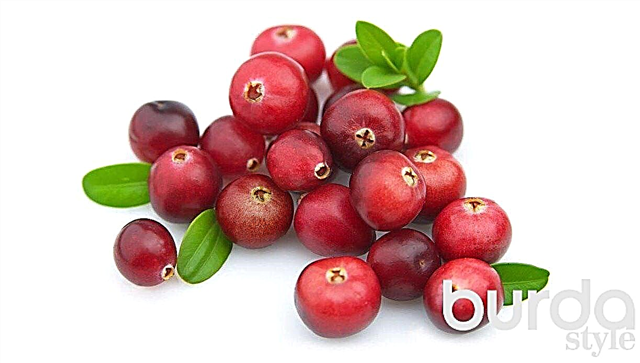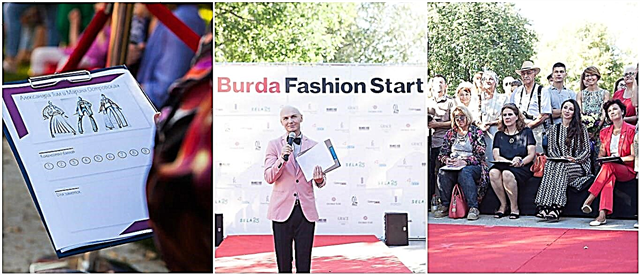With the first rays of the spring sun, melting snow and low plus temperatures, we are in a hurry to hide warm things away in a closet. But such a rush can adversely affect our health!
Cystitis is one of the most common urological diseases: in women it occurs as often as a runny nose. In most cases, the disease begins with hypothermia, which is why doctors call it "a cold below the waist."
Enough to admire the beauty of flourishing nature, sitting on a cold bench, you find yourself in a piquant situation: you can’t leave the coveted door with a female silhouette and the letter “F” more than 10 steps and longer than 5 minutes ... Most likely, it cyst!
-What to do?
The main thing is not to panic! Half of the girls under 25 suffer from cystitis at least once, and most of those over 30 suffer it repeatedly.
Self-medication in this case is not the best way: the doctor will choose drugs (uroseptics) that will help to avoid complications, because cystitis often goes into pyelonephritis, and that in turn takes a chronic form. The presence of an infection in the bladder is not the only condition for the occurrence of inflammation. The general condition of the body is very important: if it is weakened by colds, vitamin deficiency, stress, cystitis will certainly take advantage of this. Therefore, you must always be alert!
- Avoid hypothermia - general or partial. Even if only your arms and legs are frozen or your lower back is blown, troubles are guaranteed!
- Do not wear tight jeans and underwear with tightening - it complicates blood circulation in the pelvic organs and promotes the development of cystitis.
- Be less nervous: in moments of great excitement, the bladder also becomes upset - although it is empty, it always pulls to the toilet. From this condition to cystitis is one step.
- Visit the toilet at least 5-6 times a day at intervals of 4-5 hours - stagnation of urine contributes to the spread of infection. Pathogens can enter the blood vessels from the rectum if you suffer from constipation.

Two sides of the same coin
What is dangerous cystitis and what is its difference from pyelonephritis? Both diseases have an inflammatory nature - they are caused by bacteria. Only with cystitis, the walls of the bladder become inflamed, and with pyelonephritis, the infection invades the renal pelvis, collecting urine filtered by the kidneys and directing it down the ureters into the bladder.
In this case, it can also become inflamed, and sometimes it can be the other way around: first cystitis occurs, which is complicated by pyelonephritis. Distinguishing them from each other is easy.
The main symptom of cystitis is a sharp pain in the lower abdomen. If the renal pelvis becomes inflamed, there is a pulling pain in the lower back - so weak that many do not pay attention to it.
With cystitis, the temperature, as a rule, is within normal limits, and with pyelonephritis it rises to 37.3 ° and constantly keeps at this level.
Rapid urination occurs in both cases, but with cystitis it is accompanied by a cut, and with pyelonephritis - no. If you have any of these symptoms, let the doctor know about it!
Germs
 With cystitis and pyelonephritis, the treatment tactics are almost the same, only the heating pad should be applied to different places: in the first case, warm the lower abdomen, and in the second - the lower back.
With cystitis and pyelonephritis, the treatment tactics are almost the same, only the heating pad should be applied to different places: in the first case, warm the lower abdomen, and in the second - the lower back.
It is recommended that you start taking antimicrobials right away. There are many of them, and what will suit you, the urologist will tell. Just keep in mind: with cystitis you need to be treated for at least 5-7 days, and with pyelonephritis - 2 weeks or longer, and you may need a combination of several antimicrobial agents.
Do not interrupt the course in the middle, even if the discomfort has disappeared.Many people decide: it’s better - it means that the pills worked, and stop taking them. However, to completely defeat the infection, a few days is not enough. The “unfinished” pathogens will go on the attack again, and it will be more difficult to cope with them: they will develop resistance to the drug, and cystitis will become chronic.
-
In special mode
To reduce pain and burning sensation in cystitis, you need to drink a lot, and after a course of antibacterial therapy, wash out the remaining infection from the body for another week. To do this, consume at least 2.5-3 liters of fluid per day: every hour from 9 to 17 (when the kidneys are especially active), drink a glass of alkaline mineral water without gas (Essentuki-4, Slavyanovskaya, Smirnovskaya, Jermuk), unsweetened fruit drinks, tea with milk plus a diuretic infusion of bearberry leaf (aka bear ears), lingonberries, peppermint, birch leaves and buds, marjoram, St. John's wort, thyme, horsetail or thyme. Buy something from this list at the pharmacy and brew as indicated on the package. A plentiful drink will not allow bacteria to attach to the walls of the bladder and flush the urinary tract.
If you want to improve your well-being as soon as possible, visit the toilet as often as possible - doctors call this the regime of increased urination. Scientists have calculated: the fair sex empties the bladder 40 (!) Days throughout life. Try to find a couple of hours of your precious time for such an important matter.
Lay on blueberries, cranberries and lingonberries (berries can be fresh, frozen or dried) - they reduce inflammation of the bladder. Do not raise a glass of champagne for a speedy recovery - alcohol will only spur the disease. The same applies to spices, smoked meats, pickles and marinades, ketchup, mayonnaise, mustard, garlic, horseradish. Half juices, especially freshly squeezed and concentrated, dilute with water, because they also have an irritating effect.
Kidney tea

For the treatment and prevention of kidney and bladder diseases, take in turn special infusions (1 week, then another) 1/3 cup 2-3 times a day between meals, unless otherwise stated.
Here are some recipes.
- Combine motherwort, marsh coughweed and kidney tea (3: 2: 1). Pour 1 table. collection spoon with a glass of boiling water, heat for 10 minutes in a water bath, leave for an hour in a thermos, strain.
- Mix the leaves of lingonberry and bearberry (bear ears)
 . Pour 1 table. collection spoon with a glass of boiling water, heat in a water bath for 10 minutes, insist 30 minutes in a thermos.
. Pour 1 table. collection spoon with a glass of boiling water, heat in a water bath for 10 minutes, insist 30 minutes in a thermos. - Take birch leaves, blackcurrant leaves, kidney tea grass and rosehip berries (1: 1: 1: 2). Pour 1 table. collection spoon with a glass of boiling water (preferably in a thermos) and insist 30 minutes.
- Brew ordinary tea with oregano or make an infusion (it acts stronger). To do this, fill in 2 tables. tablespoons of grass with 2 cups boiling water, heat for 45 minutes in a water bath, cool, strain and drink the infusion warm half a cup 2 times a day 15-20 minutes before eating.
- There is an alternative for coffee lovers - roasted and ground burdock root (1 teaspoon per mug of hot water). This infusion tastes good, but acts as a medicine if you drink it 2-3 times a day for half a glass.
Text: Ivan Belokrylov. Photo: Fotolia.com; Legion Media CFA "Burda".

 . Pour 1 table. collection spoon with a glass of boiling water, heat in a water bath for 10 minutes, insist 30 minutes in a thermos.
. Pour 1 table. collection spoon with a glass of boiling water, heat in a water bath for 10 minutes, insist 30 minutes in a thermos.

